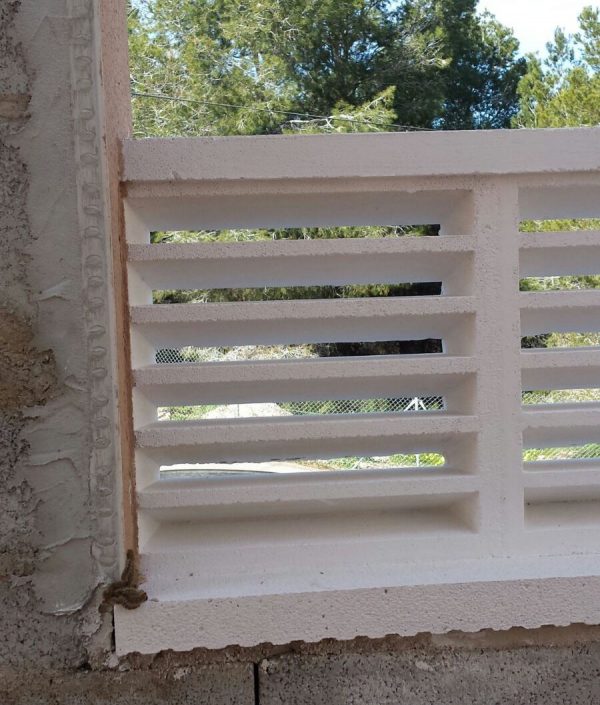Residents of the Orihuela Costa and San Miguel de Salinas in Las Filipinas and La Florida are demanding immediate help from their respective councils in their fight against the invasion of the pine processionary caterpillar.
In many areas the caterpillar, who’s urticating hairs of the larvae cause harmful reactions in humans and other mammals, has been invading terraces and gardens causing uneasiness and discomfort to anyone who gets in its way. It is also one of the most destructive species to pines and cedars in southern Europe.
The residents are insisting that the problem has now reached extremely worrying level and are demanding action from the Department of Environment saying that if nothing is done urgently, the caterpillars will soon penetrate into their houses.
The complaint has been passed to the municipal officials in the Orihuela Costa by the Federation of Orihuela Costa Associations who have responded by saying that their budget allows little additional action.
A representative of the Environmental councillor stated that some investigative was carried out in the area on 9 February, they have identified the problem and they will try to do more to eradicate the problem.
The caterpillars are notable for sitting in tent-like nests high in pine trees before proceeding through the woods and along pathways in nose-to-tail columns.
Lengthy processions are formed when fully-grown caterpillars abandon their host tree in search of pupation sites, when as many as three hundred caterpillars may travel long distances from the natal tree looking for soft soil in which to bury themselves and form cocoons.
They should be avoided by humans and by animals.






Sistemas para combatir la procesionaria:
Eliminar los bolsones cortándolos uno a uno, excepto los que estén en las guías terminales, ya que pueden dañarse éstas y sería peor. Antes de cortarlos regarlos bien para disminuir las urticarias.
Romper las bolsas con un palo (al ser muy urticantes, hay que tener mucho cuidado). Esto hay que hacerlo los días más frescos y al atardecer, de esta manera si alguna se ha escapado no le dara tiempo a rehacer el bolsón y morirá de frio durante la noche.
Eliminar las orugas cuando bajen del árbol. Se puede colocar un plástico duro pegado al perímetro del tronco a modo de embudo y se llena de agua, de este modo cuando las orugas bajen del árbol en procesión para enterrarse en el suelo se ahogarán.
Buscar las zonas de anidación de las orugas cuando están en terradas en el jardín, se suele observar un montículo de arena removida y sobre elevado del terreno de unos 15-25 cm. de diámetro aproximado. Desenterrar y matar a las orugas.
Trampas de feromonas. Se trata de capturar machos mediante la utilización de feromonas sintetizadas de la hembra, el macho queda atrapado impidiendo que fecunde a la hembra por lo que se altera el ciclo de reproducción.
En zonas amplias de pinos podemos introducir depredadores naturales, siempre que no supongan, un peligro para otras especies. Los principales depredadores y los más efectivos son, entre las aves, los carboneros y los herrerillos, dos pájaros insectívoros especialmente voraces con la procesionaria. Entre los mamíferos se pueden utilizan llirón careto y murciélagos, también y aunque su compañía no resulta muy agradable podemos contar con avispas, cigarras y hormigas.
Depredador procesionaria
Para un jardín lo mejor es potenciar la existencia de aves insectívoras mediante la instalación de cajas nidos, comederos, etc. que sirvan de reclamo y refugio para las aves.
Otros métodos para combatir la procesionaria es con la aplicación de tratamientos químicos mediante maquinaria especializada de fumigación, y también otros tratamientos mediante insecticida ecológico (uso de Bacillus thuringiensis). Estos tratamientos sólo pueden acometerse durante el inicio del otoño, fecha en la que el insecto se encuentra en una fase en la que puede ser atacado con insecticidas.
El daño característico que produce es la defoliación que generalmente no mata al árbol pero si lo puede debilitar en gran medida facilitando así el ataque por parte de otros enemigos. Si erradicamos la plaga a tiempo, el árbol se ira regenerando con el paso del tiempo, así que hay que actuar cuanto antes.
Considering how dangerous the pine processionary caterpillar can be to dogs, and humans, it is surprising that the local authorities are not being more responsive to the problem